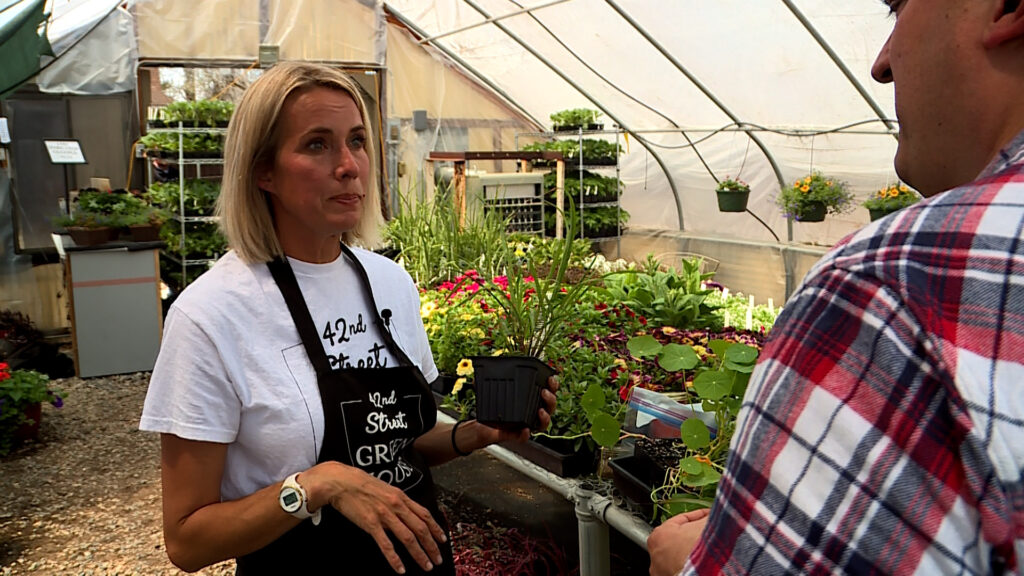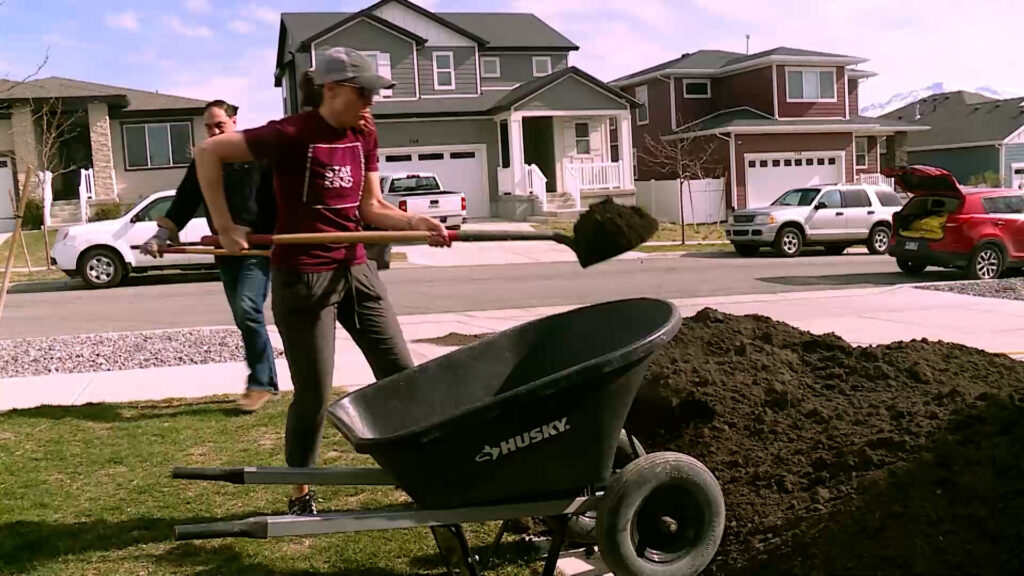Gephardt Busts Inflation: Can you save on groceries by growing your own food?
May 9, 2023, 10:10 PM | Updated: 10:56 pm
SARATOGA SPRINGS, Utah — Carrie Schippers has big plans for her backyard garden.
“We’re going to grow zucchini, and peas, and snap peas, onions, and tomatoes, several herbs. I’m going to try lettuce, which I’ve never grown,” she said.
On the day we met her at her home in Saratoga Springs, we helped her set up her brand-new raised garden bed.
Digging up dirt, both figuratively and literally, for this one. Tonight at 10, the money losers in the money savers of a the backyard garden. @KSL5TV pic.twitter.com/VB9b6bjLnO
— Get Gephardt (@KSLGephardt) May 9, 2023
Between two sets of grow boxes, all the soil needed to fill them, plus delivery, seeds, drip sprinklers and other supplies, Schippers figures she is already $520 in on her new garden — and that is without a single plant in the ground. She hopes that in time, this will all be a money saver.
Grocery aisle sticker shock
“Oh my gosh, it’s been so bad,” Schippers said of the sticker shock at the grocery store. “I don’t even look at the prices anymore. I just put what I need in my cart and just try not to think about it too much because we have to eat.”
The average household in Utah forks out $1,508 every year on their fruits and veggies, an estimate based on figures from the U.S. Bureau of Labor Statistics and the U.S. Census Bureau. That adds up to be a pretty hefty grocery bill, so can you really cut into it by growing your own stuff?
“You can if you actually use the stuff you grow,” said Cynthia Stringham, owner of the 42nd Street Greenhouse. “I find a lot of people get super excited about growing their own vegetables. They grow a beautiful tomato and lots of tomatoes and then they don’t know what to do with it.”
Where to start?
Stringham’s advice is to start by growing things you like to eat. You are more likely to take care of them.
“I actually eat from my garden every day,” she said.
And her family uses and preserves everything they grow.
Growing things which can be easily preserved also stretches your grocery dollar, and keeps you stocked in the off-season.
“If you can preserve it correctly — either by freezing or by canning, bottling,” she said.
That includes tomatoes, onions, peppers, beans, rhubarb, cucumbers and more.

Cynthia Stringham, owner of 42nd Street Greenhouse, explains to KSL’s Matt Gephardt how growing herbs can be a good cost saver for backyard gardeners. (Tanner Siegworth/KSL TV)
Another way to save: Sow your own seeds. Sure, you can buy starter plants — they are less work than seeds and more fun to plop into the ground — but they cost more.
“Some plants won’t do as well in Utah because our grow season is short,” Stringham explained. “So, you can start a lot of these plants indoors. If you have a grow light, or a very like, extremely bright, sunny window — has to be at least eight hours of extreme bright light. But you can grow these plants indoors, or you can go and shop around for some discount prices.”
The case for herbs
Stringham said herbs that are pricey in the store can provide you a big return on your money and time in the garden.
“The great thing about herbs is you can grow in small containers on your porch, you can just plop it in a section of dirt on your yard,” she said. “As long as there’s a little bit of sun, they’re going to grow.”
Whether you are growing herbs, tomatoes, rhubarb, whatever, Stringham said you do not need much space.
“Truly, all you need is a plot of ground, some good water, some good sun, check that soil, make sure it’s healthy, and you can easily grow a garden.”
Even folks living in a townhome or an apartment can grow their food in a container. We found plenty of options online. And for anyone new to gardening, there is no shame in starting small, even if it means just keeping one plant alive.
“Keep one herb alive — your basil or whatever it is — and then you’ll start getting into the habit. You’ll start getting used to it and becoming addicted to gardening, like I have,” Stringham said. “Maybe a little too much.”
Common gardening fails
One of the biggest mistakes people make, she said, is they overwater or underwater their plants.
“If you can learn how to water correctly, you’re going to save yourself a lot of money,” she said.
Another common fail is not understanding where the sun is for their garden.
“You can’t plant a tomato in the shaded garden and think it’s going to produce,” Stringham said.
Home gardeners should also know their soil.
“A lot of times, people just kind of guess on their soil, and they’ll bring in lots of expensive compost or bags of soil,” she said. “The reality is, if you’re planting directly in the ground, the best thing to do is to get a soil test — it will tell you what elements are in your soil. Most likely the real element that you’re going to need is nitrogen. You can save money by doing that and not amending your soil heavily with other things that will bring it down.”
For Utah gardeners at any level, Stringham recommends visiting the website for Utah State University’s Yard and Garden extension for detailed information and advice.
A ‘grand adventure’
As for Schippers, she is ready to embrace an addiction to gardening. She laughs that, for her family, their new garden will not be a money saver this year, but that is OK.
“For me, it’s about growing my own food so I know where it comes from,” she told us. “I want my kids to be able to come out here and pick raw green beans. I want them to be able to learn how to grow their own food and to enjoy it. It just tastes better out of the garden.”
Not only does she believe her family will enjoy the fruits of their labor, there is also a sense of pride.
“There’s something so special about being able to come outside and pick what you need for dinner,” she said. “I have hope that it will be a grand adventure.”
















